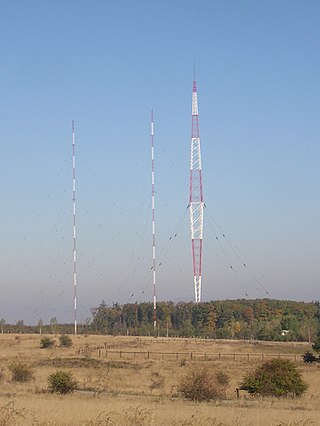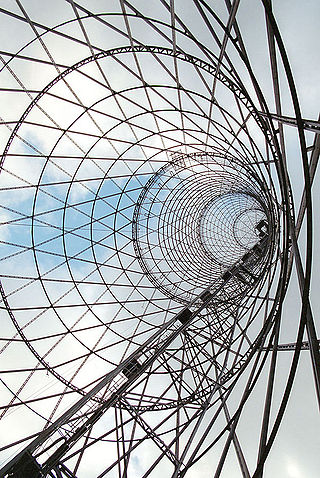Telecommunications in Antigua and Barbuda are via media in the telecommunications industry.

Telecommunications in Bulgaria include radio, television, fixed and mobile telephones, and the Internet.
Telecommunications in France are highly developed. France is served by an extensive system of automatic telephone exchanges connected by modern networks of fiber-optic cable, coaxial cable, microwave radio relay, and a domestic satellite system; cellular telephone service is widely available, expanding rapidly, and includes roaming service to foreign countries.
Telecommunications in Georgia include radio, television, fixed and mobile telephones, and the Internet.
Jordan has a highly developed communications infrastructure. Jordan's telecom infrastructure is growing at a very rapid pace and continually being updated and expanded. Communications in Jordan occur across many media, including telephone, radio, television, and internet.
Telecommunications in Kuwait provides information about the telephone, Internet, radio, and television infrastructure in Kuwait.
Telecommunications in Kyrgyzstan include fixed and mobile telephones and the Internet.
The People's Republic of China possesses a diversified communications system that links all parts of the country by Internet, telephone, telegraph, radio, and television. The country is served by an extensive system of automatic telephone exchanges connected by modern networks of fiber-optic cable, coaxial cable, microwave radio relay, and a domestic satellite system; cellular telephone service is widely available, expanding rapidly, and includes roaming service to foreign countries. Fiber to the x infrastructure has been expanded rapidly in recent years.

The telecommunications in Russia has undergone significant changes since the 1980s, radio was a major new technology in the 1920s, when the Communists had recently come to power. Soviet authorities realized that the "ham" operator was highly individualistic and encouraged private initiative – too much so for the totalitarian regime. Criminal penalties were imposed but the working solution was to avoid broadcasting over the air. Instead radio programs were transmitted by copper wire, using a hub and spoke system, to loudspeakers in approved listening stations, such as the "Red" corner of a factory. This resulted in thousands of companies licensed to offer communication services today. Due to the enormous size of the country Russia today, the country leads in the number of TV broadcast stations and repeaters. The foundation for liberalization of broadcasting was laid by the decree signed by the President of the USSR in 1990. Telecommunication is mainly regulated through the Federal Law "On Communications" and the Federal Law "On Mass Media"
Telecommunications in Saudi Arabia have evolved early in the Kingdom since the establishment the Directorate of Post, Telephone and Telegraph (PTT) in 1926.
Turkmenistan has a state-controlled press and monitored communication systems. Turkmenistan's telecommunications services are considered to be the least developed of all the Commonwealth of Independent States (CIS) countries. Overall, the telecom market in this predominantly rural country is relatively small but has been trying boldly to expand in recent years. The state-owned Turkmen Telecom has been the primary provider of public telephone, email and internet services, and through a subsidiary has been operating a GSM mobile network in competition with a private mobile operator, BCTI.
In Venezuela the first law on telecommunications was approved in 1940. It identified the responsibility of the state in regard to telephone and other telecommunication systems, including radio and television services.
Telecommunications in Cuba consists mainly of NTSC analog television, analog radio, telephony, AMPS, D-AMPS, and GSM mobile telephony, and the Internet. Telephone service is provided through ETECSA, mobile telephone service is provided through the Cellular Telephone Company of Cuba (CUBACEL) and, previously, Caribbean Cellular. Cuba's main international telecommunications links are through Intersputnik, with limited effectiveness of undersea telephone cables to the Americas, Spain, and possibly Italy due to underdevelopment.

A satellite telephone, satellite phone or satphone is a type of mobile phone that connects to other phones or the telephone network by radio link through satellites orbiting the Earth instead of terrestrial cell sites, as cellphones do. Therefore, they can work in most geographic locations on the Earth's surface, as long as open sky and the line-of-sight between the phone and the satellite are provided. Depending on the architecture of a particular system, coverage may include the entire Earth or only specific regions. Satellite phones provide similar functionality to terrestrial mobile telephones; voice calling, text messaging, and low-bandwidth Internet access are supported through most systems. The advantage of a satellite phone is that it can be used in such regions where local terrestrial communication infrastructures, such as landline and cellular networks, are not available.

The history of mobile phones covers mobile communication devices that connect wirelessly to the public switched telephone network.

The Internet in Ukraine is well developed and steadily growing, mostly uninfluenced by the global financial crisis; in April 2012 rapid growth was forecast for at least two more years. As of 2011, Ukraine was ranked 9th in the "Top 10 Internet countries in Europe", with then 33.9% Internet penetration and 15.3 million users; growing to 36.8% in 2012. However, as of January 2021 about 30 million Ukrainians were Internet users.
The Internet in Chile has its roots in experimental tests conducted in 1986 between the Universidad de Chile and the Universidad de Santiago de Chile, the two main public universities in the country. Its commercialization began in the mid-1990s, and it experienced widespread adoption in the second half of the 2000s. Before this, Chile had previously attempted the Cybersyn project in 1971, which aimed to establish an almost real-time economic information transfer system with the government, but it did not succeed.
Telecommunications in Antarctica is provided by the organizations that have established research stations on the continent. Antarctica is not formally designated by the International Telecommunication Union (ITU) in any of the world zones.

Starlink is a satellite internet constellation operated by American aerospace company SpaceX, providing coverage to over 70 countries. It also aims for global mobile phone service after 2023.

In February 2022, two days after Russia's full-scale invasion, Ukraine requested American aerospace company SpaceX to activate their Starlink satellite internet service in the country to replace internet and communication networks degraded or destroyed during the war. Starlink has since been used by Ukrainian civilians, government and military. The satellite service has served for humanitarian purposes, as well as defense and attacks on Russian positions.






